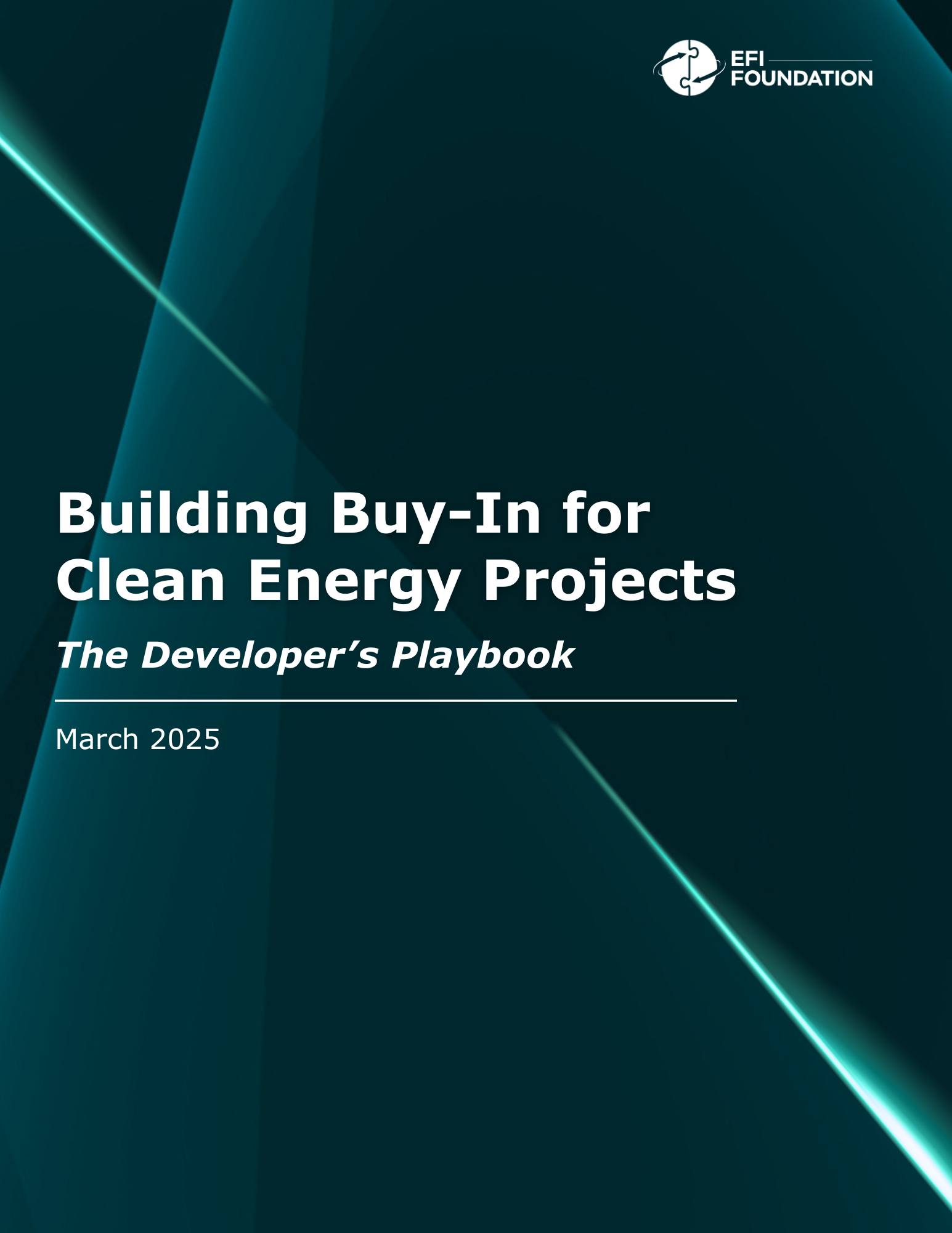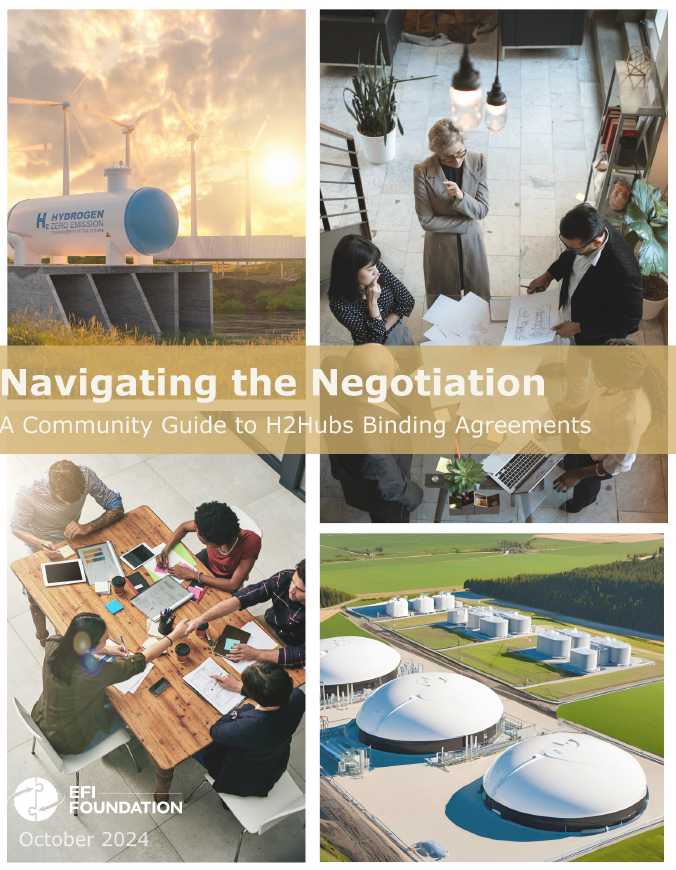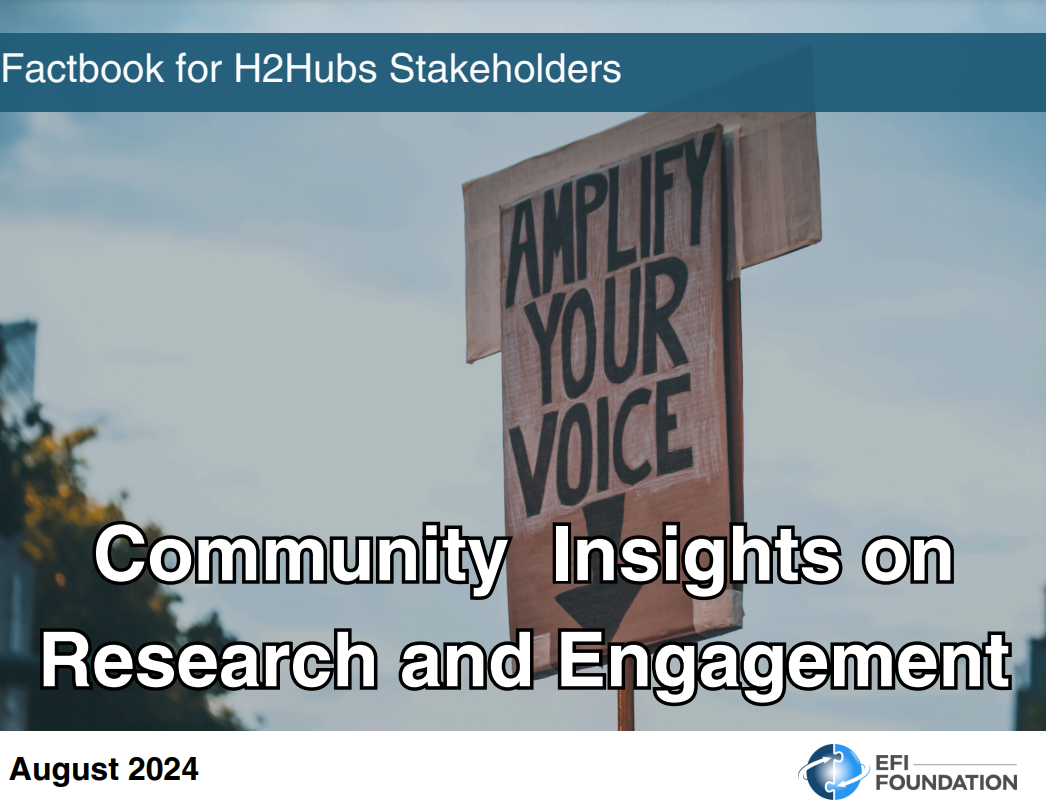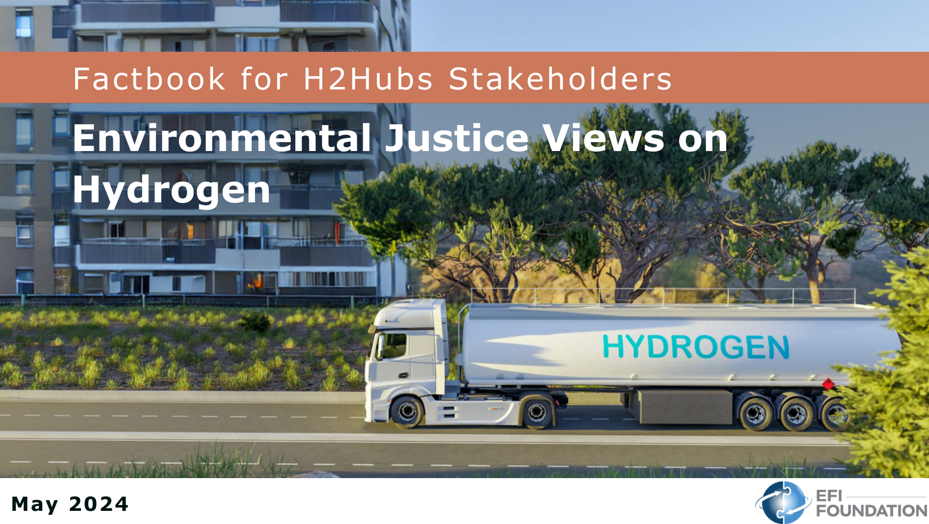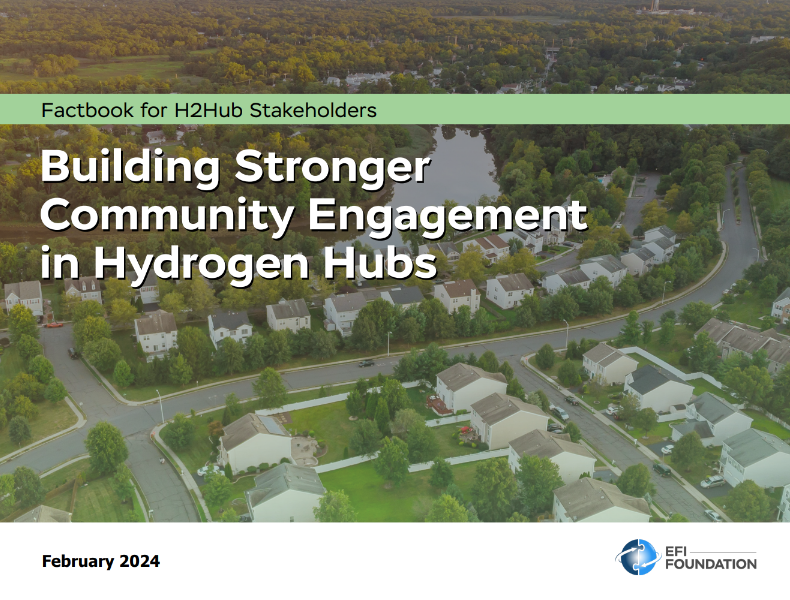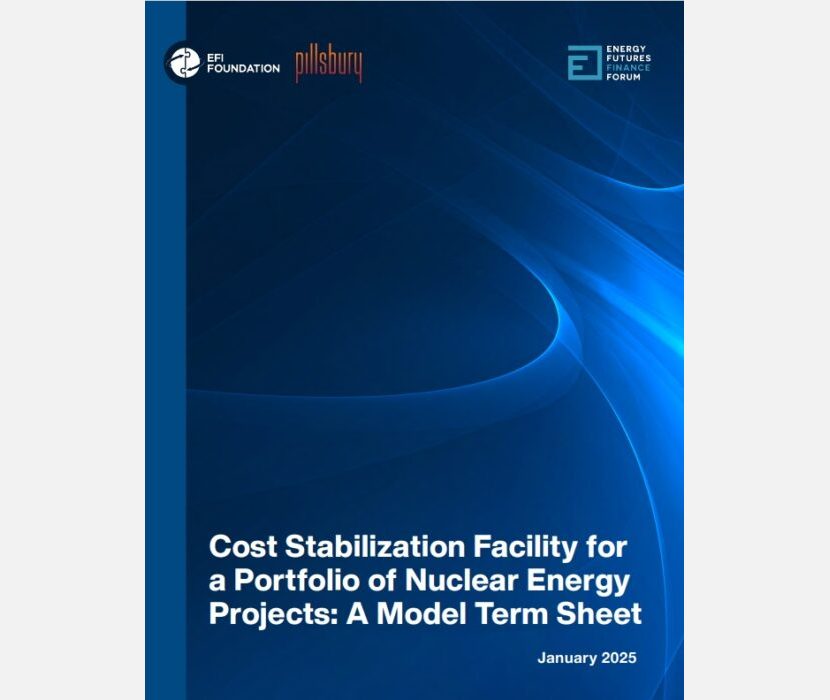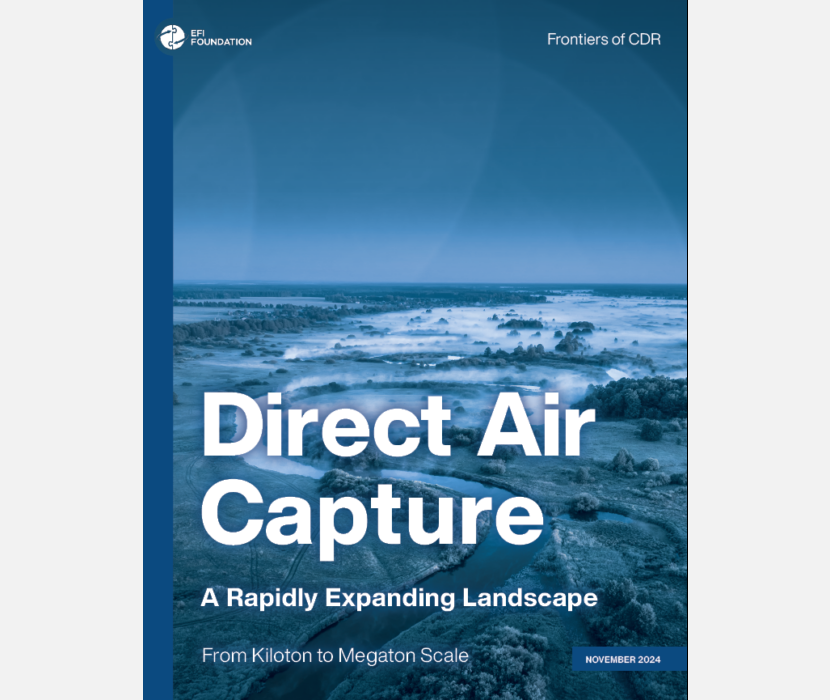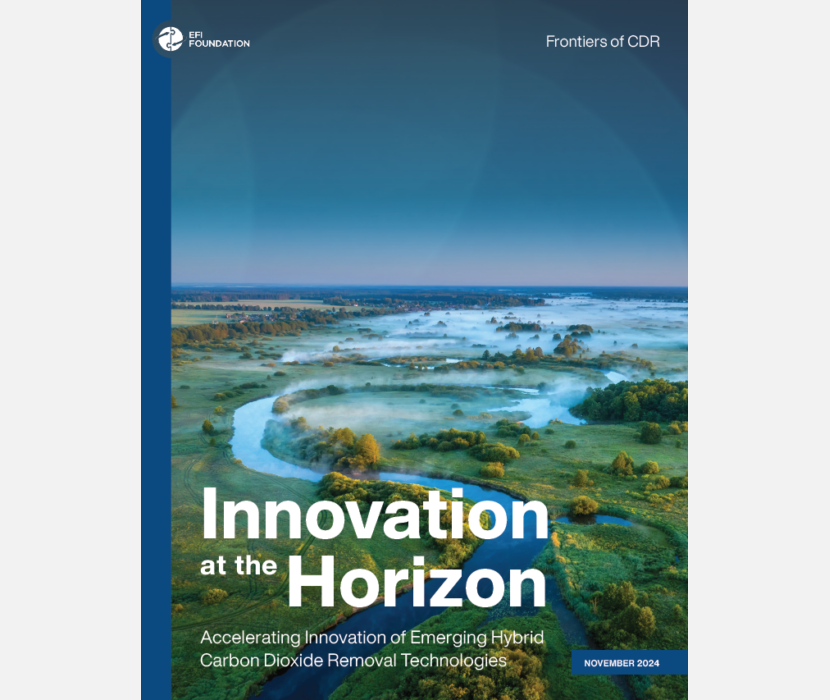Building Buy-In for Clean Energy Projects: The Developer’s Playbook (March 2025) outlines how clean energy developers can expedite projects through community engagement and coalition building. This report uses survey results and analysis on early and effective engagement with communities as a guide to help capitalize on investments and avoid project delays that stem from a lack of public buy-in and input. Regulatory policies, financial risk, and overloaded and outdated power grids play a role in slowing development—however, securing a social license to operate is essential for building new clean energy projects.
New clean energy projects can progress efficiently by meeting legitimate community needs, mitigating opposition, expediting project approvals, safeguarding investments, and aligning on shared values and positive outcomes for developers and communities alike. This report synthesizes and adds to a growing body of related work at the EFI Foundation (EFIF): Building Stronger Community Engagement in Hydrogen Hubs (February 2024); Environmental Justice Views on Hydrogen (May 2024); Community Insights on Research and Engagement (August 2024); and Navigating the Negotiation: A Community Guide to Binding Agreements in Clean Energy (October 2024).
While more community involvement can be complex and increase time needed for development planning, a basic level of engagement may lead to community acceptance with some lingering concerns, and deeper partnerships can achieve community approval with ancillary benefits both in company perception and subsequent project acceptance.
The report seeks to help developers reach higher levels of project approval and navigate smooth paths to final investment decisions by outlining a data-driven set of recommendations rooted in community preferences that can be applied to a broad range of clean energy products. It offers a guide for community engagement processes and achievable outcomes that can be used for your individual project’s needs across three major project development stages. These include early development studies, site development and business planning, and project execution:
- Early Development Studies: This phase involves initial feasibility studies to assess the technical, economic, and environmental viability of the project. It includes resource assessment and preliminary design. During this phase, developers can take a variety of steps to engage community stakeholders, including identifying and verifying community leaders, talking with local government, assessing local workforce and business capacity, considering consent-based siting, evaluating the practicality of a binding agreement, developing a mitigation plan, establishing and sharing project and engagement budgets, considering offering a range of outreach formats, and providing resources and technical support.
- Site Development and Business Planning: This phase involves developing a comprehensive business plan, refining financial models, and establishing the project’s legal and organizational structure. It includes securing financing, negotiating contracts, and obtaining necessary permits and approvals. Developers can build on the relationships established in the Early Development Studies phase and put plans into action. This includes: establishing communication ground rules, providing clarity on project timelines, discussing potential end-of-life scenarios, and investing in targeted hiring and training programs.
- Project Execution: This phase is where the project moves into the construction stage. It involves procurement of materials, hiring contractors, and managing the construction process to ensure the project is built according to specifications and within budget. Developers can use this period to fulfill their commitments. Survey results from this EFIF research and analysis show that following through on promises is necessary to build trust, and that trust is a pivotal step to securing host community support and reaching operational status. This includes communicating to community members and stakeholders weekly and when project milestones are completed, and recording all conversations and publicizing the transcripts.
Investment in community engagement and benefits can protect developer investments and increase project success, and that proactive relationship-building with communities is vital for market access. This report explains how developers can engage immediately with clear communication with community representatives before opposition mobilizes, in order to secure approvals and maintain schedules.
(Share this post with others.)


